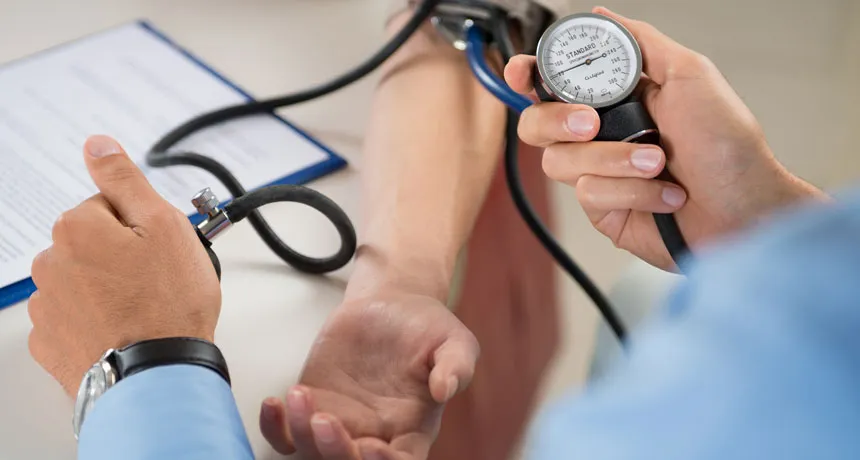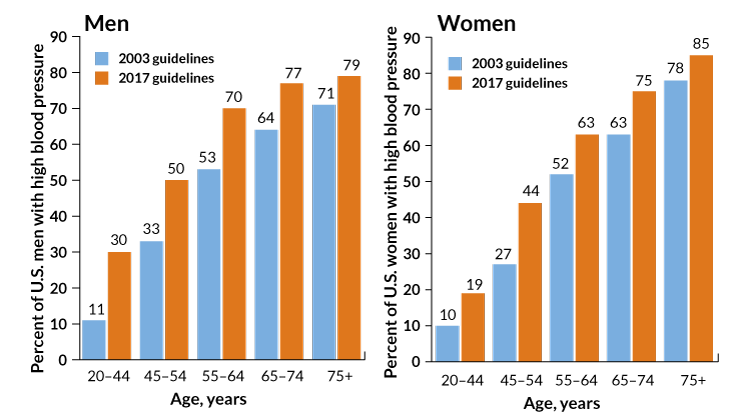New blood pressure guidelines put half of U.S. adults in unhealthy range
First major update since 2003 aims to spur heart-healthy lifestyle changes

DOUBLE CHECK New blood pressure guidelines redefine what constitutes high blood pressure. A patient’s levels should be based on the average of two or three readings taken on at least two different occasions, the authors say.
Rido/Shutterstock
- More than 2 years ago
ANAHEIM, Calif. — Nearly half of U.S. adults now have high blood pressure, thanks to a new definition of what constitutes high: 130/80 is the new 140/90. That means that 103 million people — up from 72 million under the old definition — need to make diet and exercise changes and, in some cases, take medication to lower their risk of heart attack or stroke.
These new blood pressure guidelines, the first major update since 2003, were announced November 13 at the American Heart Association’s annual scientific sessions and published in Hypertension and the Journal of the American College of Cardiology.
“It’s very clear that lower is better,” said Paul Whelton of Tulane University School of Public Health and Tropical Medicine in New Orleans, lead author of the guidelines, at a news conference. Previous studies have linked low blood pressure with low risk of cardiovascular disease (SN: 10/17/15, p. 6). The updated recommendations “will improve the cardiovascular health of our adult community in the United States,” Whelton said.
A blood pressure reading measures the systolic pressure, or how much force the blood places on the walls of the arteries when the heart beats, and the diastolic pressure, the same force but when the heart rests between beats.
Story continues after graphs
Numbers jump
Although the new definition of high blood pressure means more cases for adults across all ages, it’s expected to triple the prevalence of the disease among men under 45 and double the prevalence for women that age.

Previously, systolic pressures from 120 to 139 millimeters of mercury and diastolic pressures from 80 to 89 were considered to be prehypertension, putting a person at risk for high blood pressure in the future. Hypertension, or high blood pressure, was diagnosed once a patient hit 140 over 90. The old definition placed about one in three U.S. adults in that category.
Under the new guidelines, patients with systolic pressures under 120 and diastolic pressures under 80 are still considered to have normal blood pressure. About 42 percent of U.S. adults fall in this category. But those with a systolic reading of 120 to 129 and diastolic pressures less than 80 are now classified as having elevated blood pressure. Just over 12 percent fall in that category.
Hypertension — now diagnosable in 46 percent of U.S. adults — occurs when a patient has a blood pressure reading of 130 over 80 or higher. Some who were previously considered to have prehypertension have now been placed firmly in the hypertension category.
“People with blood pressure levels between 130 and 140 are at about twice the risk of heart attack and stroke as people with normal levels,” says David Goff of the National Heart, Lung and Blood Institute in Bethesda, Md., who was not involved with developing the guidelines. The new definition for high blood pressure “really highlights the importance of preventing high blood pressure in the first place.”
Lifestyle changes are recommended for those with elevated as well as high blood pressure. For those in the first stage of hypertension, 130 to 139 over 80 to 89, whether drugs are also prescribed will depend on if patients have ever had a heart attack or stroke or if their future risk is greater than 10 percent in the next 10 years. The new guidelines are not expected to open the floodgates to treating hypertension medically. About 4 million more U.S. adults are projected to require medication, or 1.9 percent more than was recommended in the older guidelines, said Robert Carey of the University of Virginia School of Medicine in Charlottesville, a coauthor of the new guidelines.
“This is a new approach for blood pressure management,” says Goff, which “will help target the medication to the people who stand to benefit the most.” Most importantly, “we really need to redouble our efforts to improve our diets” and increase physical activity, he adds. “Small changes are important — you don’t need to make big changes all at once.”
Editor’s note: This story was updated November 14, 2017, to correct the description of the increase in numbers of people who have high blood pressure under the new versus the old guidelines.







